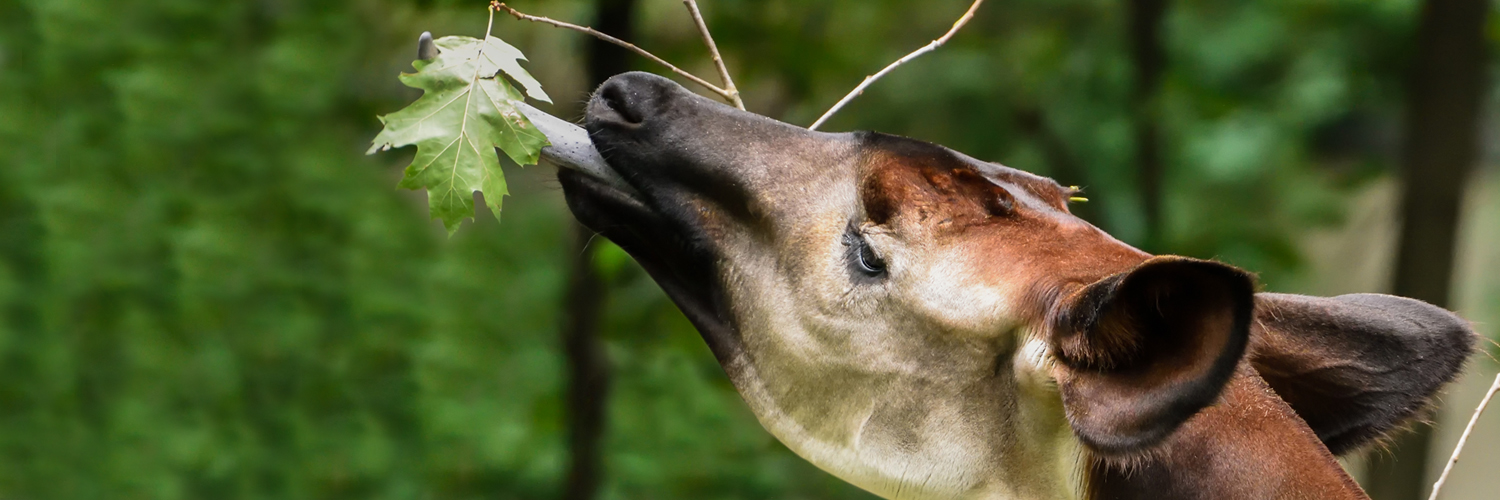
Okapi
Okapia johnstoni
Characteristics
- Origin
Africa: Democratic Republic of the Congo
- Habitat
dense rainforest, preferably in the dense undergrowth on the banks of streams and rivers
- Diet
Leaves, buds, young shoots they pick with their long tongue
- Status
10,000 to 35,000 animals
- Size
Body length: 200-210 cm; shoulder height: 135-160 cm
- Weight
200 to 350 kg
- Gestation period
15 months
- Achievable age
up to 30 years
Threat Categories of IUCN


Did you know that ...
... the scientific world only discovered the okapi around 1900,
... only the male okapi have little horns, just 15 cm long,
... they have an extremely well developed sense of hearing?

